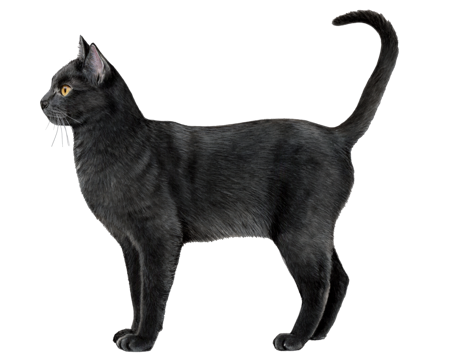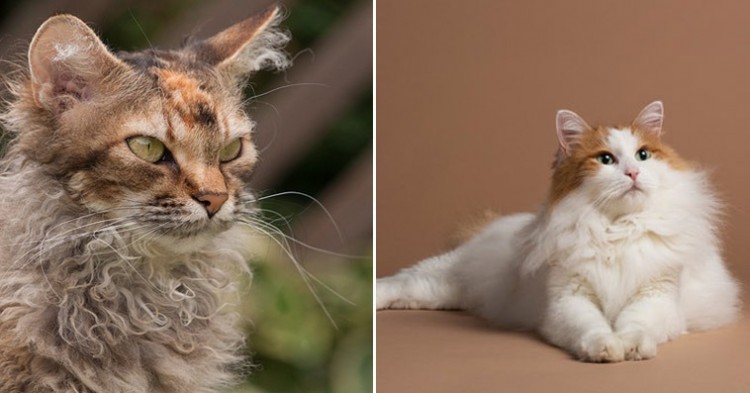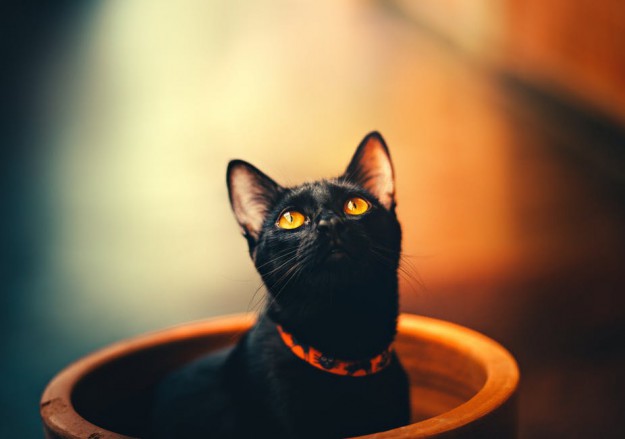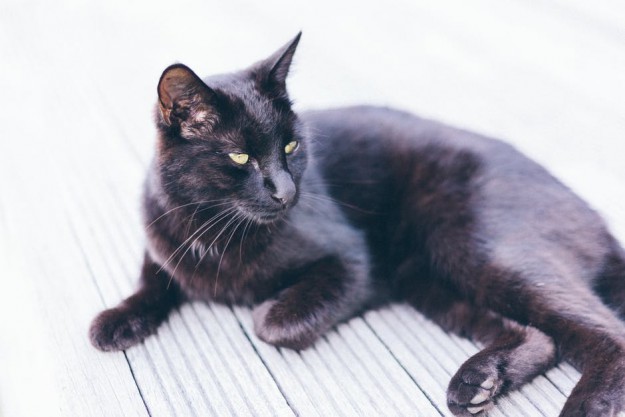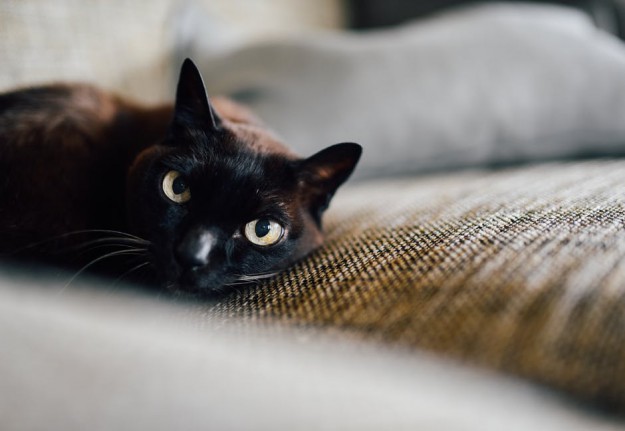Breed Information
| Popularity/Rank | 36 |
|---|---|
| Name | Bombay |
| Other names | Small black Panther |
| Origin | United States |
| Size | Medium |
| Coat | Glossy, Sleek, Short Hair |
| Lap Cat | Yes |
| Lifespan | 12 to 16 years |
| Temperament |
Dependent, Gentle, Intelligent, Playful, Affectionate Dependent: The Bombay cat is a very dependent breed, meaning they rely heavily on their human companions for love and attention. They are not the type of cat that enjoys being left alone for long periods of time and will often become anxious or depressed if left alone for too long. This makes them the perfect companion for someone who is home most of the time and can give them the attention they crave. Gentle: Despite their small size, Bombay cats are actually quite strong and muscular. However, they are also very gentle creatures that enjoy being petted and cuddled. They are not known for being particularly active or playful, but prefer to spend their time lounging around and being lazy. This makes them ideal pets for people who want a low-maintenance companion that is still affectionate and loving. Intelligent: Bombay cats are extremely intelligent creatures that are quick to learn new things. They are often easy to train to do tricks or behaviors and enjoy showing off their skills to their human companions. This intelligence also means they are good at problem solving and can be quick to figure out how to open doors or cabinets that they shouldn’t be in. While this can be frustrating for owners, it also means they are a very smart breed of cat. Playful: Despite their reputation as being lazy lounge lizards, Bombay cats can actually be quite playful when they want to be. They enjoy playing with toys and chasing after anything that catches their eye. This playfulness combined with their intelligence means they can be quick learners when it comes to playing games like fetch or catch. If you’re looking for a cat that will keep you entertained, then a Bombay is definitely the right choice for you! |
| Weight | 8 to 12 pounds |
| Colors | Black |
| Kitten Prices |
USD $600 - $1000
When looking for a Bombay kitten, you can expect to pay anywhere from $600 to $1000. The price of a Bombay kitten will vary depending on the breeder or the reputation of the breeder. The price of a Bombay kitten will also impact the parents of the kitten. The price of a Bombay kitten will also impact the quality of the kitten. When choosing a Bombay cat, it is important to consider all of these factors. |
Breed Characteristics
| Adaptability | |
|---|---|
| Affection Level | |
| Child Friendly | |
| Dog Friendly | |
| Energy Level | |
| Grooming | |
| Health Issues |
Feline infectious peritonitis, Feline leukemia, Feline immunodeficiency virus, Rabies, Ringworm Is Bombay cat Hypoallergenic? There is no definitive answer to this question as it depends on the individual cat. Some Bombay cats may be hypoallergenic, while others may not be. It is thought that the Bombay cat's short, dense coat may be less likely to trigger allergies in people who are sensitive to cat dander. However, it is important to note that no cat is completely hypoallergenic and all cats shed some dander. 1. Feline infectious peritonitis Feline infectious peritonitis (FIP) is a viral disease that affects cats. The disease is caused by a virus called the feline coronavirus (FCV). Cats can contract the virus through contact with infected saliva, blood, or feces. The virus can also be spread through contact with contaminated surfaces. Symptoms of FIP include fever, weight loss, appetite loss, lethargy, and fluid buildup in the abdomen. The disease can be fatal if left untreated. Treatment for FIP is typically supportive care to help relieve symptoms. There is no cure for the disease. 2. Feline leukemia Feline leukemia is a viral disease that affects cats. The disease is caused by a virus called the feline leukemia virus (FeLV). Cats can contract the virus through contact with infected saliva, blood, or feces. The virus can also be spread through contact with contaminated surfaces. Symptoms of feline leukemia include fever, weight loss, appetite loss, lethargy, and anemia. The disease can be fatal if left untreated. Treatment for feline leukemia typically involves supportive care to help relieve symptoms. There is no cure for the disease. 3. Feline immunodeficiency virus Feline immunodeficiency virus (FIV) is a viral disease that affects cats. The disease is caused by a virus called the feline immunodeficiency virus (FIV). Cats can contract the virus through contact with infected saliva, blood, or feces. The virus can also be spread through contact with contaminated surfaces. Symptoms of FIV include fever, weight loss, appetite loss, lethargy, and immunodeficiency. The disease can be fatal if left untreated. Treatment for FIV typically involves supportive care to help relieve symptoms. There is no cure for the disease. 4. Rabies Rabies is a viral disease that affects mammals. The disease is caused by a virus called the rabies virus. Cats can contract the virus through contact with infected saliva, blood, or feces. The virus can also be spread through contact with contaminated surfaces. Symptoms of rabies include fever, weight loss, paralysis, and hydrophobia. The disease is always fatal if left untreated. Treatment for rabies typically involves supportive care to help relieve symptoms. There is no cure for the disease. 5. Ringworm Ringworm is a fungal infection that affects the skin. The infection is caused by a fungus called the Trichophyton mentagrophytes. Cats can contract the infection through contact with infected animals or contaminated surfaces. Symptoms of ringworm include itching, hair loss, and scaly skin. The infection is not typically fatal, but it can be uncomfortable for affected cats. Treatment for ringworm typically involves antifungal medication. |
| Intelligence | |
| Shedding | |
| Social Needs | |
| Stranger Friendly | |
| Vocalization | |
| Health Care |
The Bombay cat is a relatively healthy breed, but like all cats, they are susceptible to certain health problems. Some of the most common health problems seen in Bombay cats include respiratory problems, heart disease, and kidney disease.
respiratory problems are the most common health problem seen in Bombay cats. This is likely due to the fact that they are a brachycephalic breed, meaning they have a short nose and flattened face. This can cause difficulties in breathing, and can lead to respiratory problems. Heart disease is also common in Bombay cats. This is often due to the fact that they are a relatively small breed, and their heart is not as strong as that of a larger breed. Kidney disease is also seen in Bombay cats. This is often due to the fact that they are a relatively sedentary breed, and their kidneys do not get the exercise they need. Overall, Bombay cats are a relatively healthy breed. However, they are susceptible to certain health problems. If you have a Bombay cat, it is important to be aware of these health problems and to take steps to prevent them. |
History
The Bombay cat is a relatively new breed of cat, having been developed in the 1950s by Nikki Horner, a breeder from Louisville, Kentucky. Horner was attempting to create a black version of the Burmese, and chose to use sable Burmese and black American shorthairs in her breeding program. The first generation of Bombay kittens were born in 1958, and Horner continued to work on perfecting the breed over the next few years.
The Bombay gained popularity rapidly in the 1960s, becoming one of the most popular breeds in America. However, due to poor breeding practices, the quality of Bombays began to decline in the 1970s and 1980s. In an effort to save the breed, Horner stopped registering Bombays with The Cat Fanciers Association (CFA) in 1977, instead choosing to register them as "American Shorthairs of Bombay type". This helped to preserve the Bombay's unique appearance while also allowing Horner to continue her work on improving the breed without outside interference.
The Bombay was officially recognized as a distinct breed by CFA in 1979, and has since regained its popularity. Today, Bombays are known for their affectionate nature and loyalty to their owners, as well as their striking good looks.
Description
The Bombay cat is a medium-sized, short-haired black cat with copper eyes. The Bombay is a cross between a black American Shorthair and a sable Burmese. The Bombay was created in the 1950s by Nikki Horner, a Louisville, Kentucky–based breeder who wanted to develop a cat that resembled a miniature panther. The breed was first recognized by the Cat Fanciers' Association in 1970.
The Bombay has a lifespan of 12 to 15 years. They weigh 9 to 15 pounds (4 to 7 kg). The Bombay is muscular and compact, with short legs and a broad chest. The head is rounded with large ears set wide apart. The eyes are copper or gold. The coat is black and shiny; there are no other color varieties of the Bombay.
The Bombay is an outgoing, people-oriented breed that loves attention and affection. They are known for being very vocal, often meowing to get their owner's attention. They are also known for being intelligent and easily trained; they can be taught tricks such as fetching and rolling over. Bombays enjoy playing games and interacting with their owners; they are not content to be left alone for long periods of time.
Bombays get along well with other cats, dogs, and children if they are raised together from an early age; they may be shy around strangers at first but will warm up quickly once they get to know them. Bombays do not do well if left alone for extended periods of time; they become bored easily and may start acting out by meowing excessively or engaging in destructive behaviors such as scratching furniture or urinating outside the litter box.
The health problems that have been reported in Bombays include heart defects, respiratory problems, hip dysplasia, and patellar luxation (dislocated kneecaps). Some Bombays may also be prone to allergies or asthma.
Bombays have high energy levels and need plenty of exercise; they should have access to climbing trees or scratching posts in order to stay active and avoid boredom. They are also known for being escape artists; if not properly secured, they will find ways to sneak out of the house in search of adventure.
Overall, the Bombay is an affectionate breed that does best in homes where there is someone around most of the time to provide companionship and entertainment



